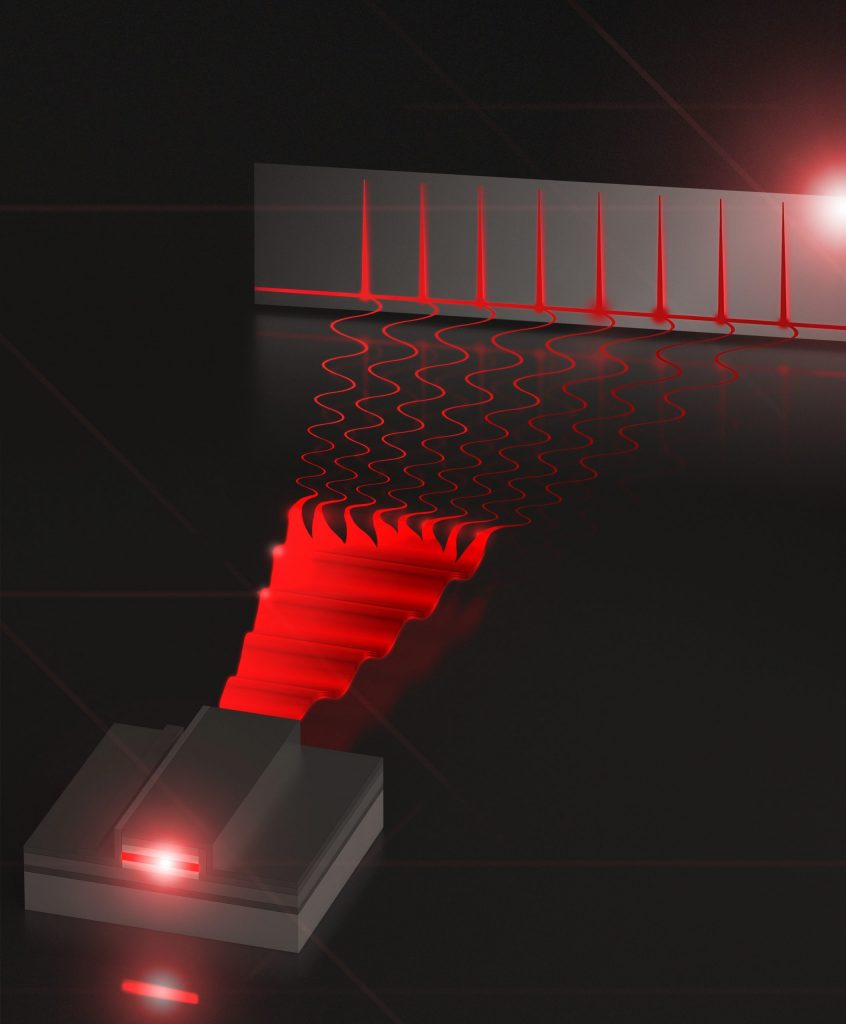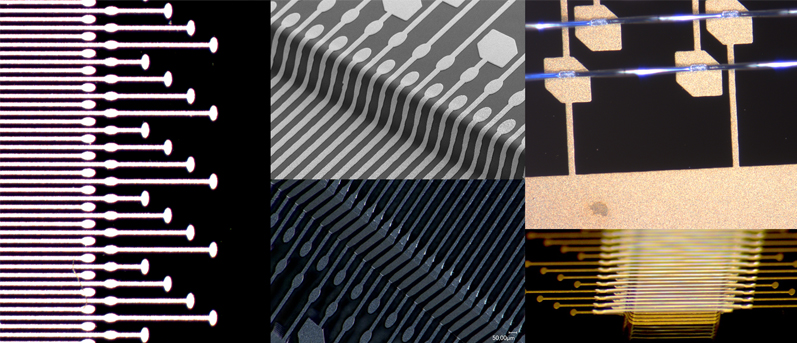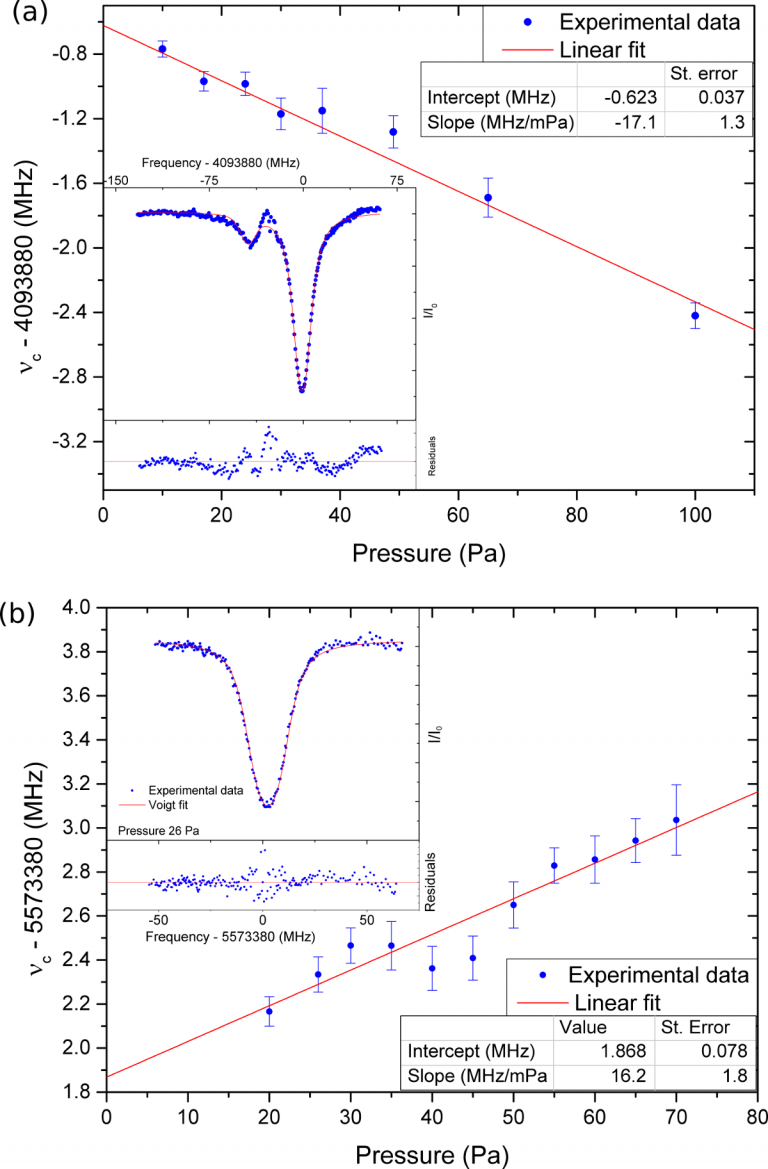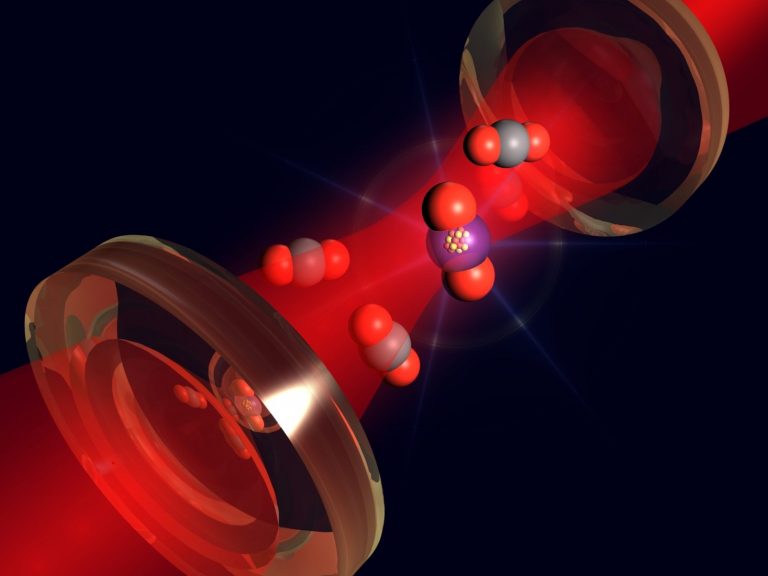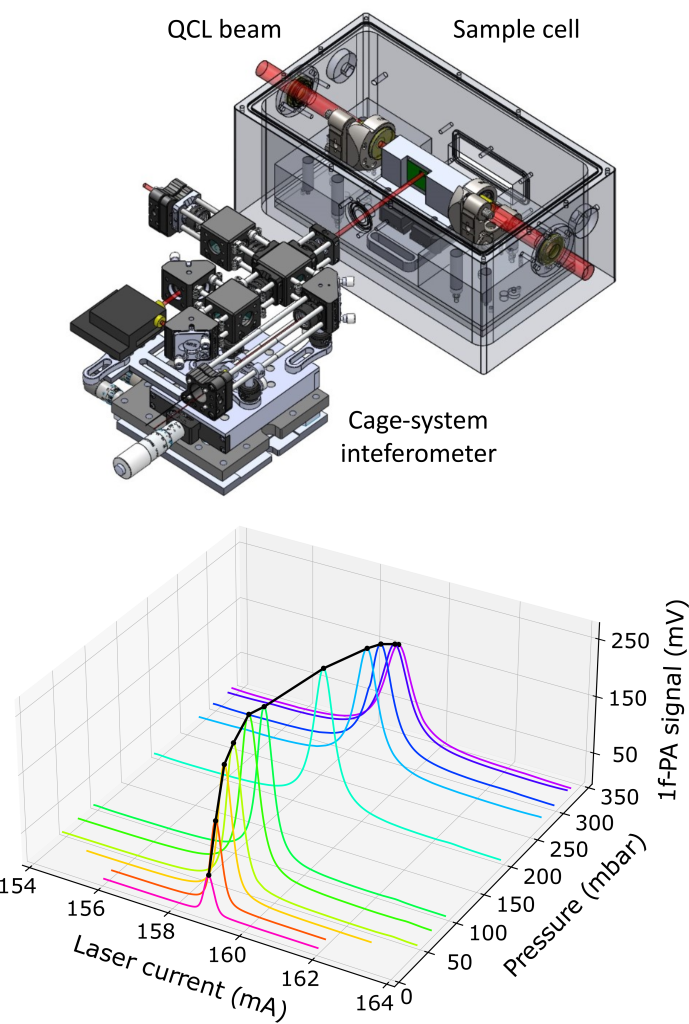Under the leadership of Dr. Paolo De Natale, the Mid-IR and THz Group at CNR-INO excels in the design, assembly, and characterization of advanced optoelectronic systems engineered to operate across the Mid-IR to THz spectral range. The group’s core activity is the realization of ad hoc detection systems for the investigation and control of the frequency- and intensity-noise features of state-of-the-art MIR and THz coherent emitters (e.g. OPO and semiconductor cascade lasers). Additionally, the investigated and realised sources are used in high-sensivity and precision spectroscopic analysis and advanced setups. The specific activities are linked below.
Device Characterization
Among semiconductor devices, Quantum Cascade Lasers (QCLs) and Interband Cascade lasers (ICLs) are very promising candidates for developing novel quantum technologies operating in the so far much less explored mid-infrared (MIR) and THz spectral ranges as compared to the well-known telecom wavelength range.
Cold Molecules
Laser spectroscopy of cold molecules is a powerful tool to address fundamental physical questions. We develop new methods to cool and control neutral molecules and apply them to improve the resolution of the spectroscopic measurements. In particular we exploit the Stark energy of polar molecules in non-homogeneous electric fields and use both conventional and microstructured devices to decelerate and trap cold molecules.
High-Resolution Spectroscopy
Due to the lack of high-power, tunable sources and fast, sensitive detectors, the terahertz (THz) region of the electromagnetic spectrum has been lagging behind from a technological point of view. The lack of suitable technologies led to the THz band being called the “THz gap”.
SCAR
Radiocarbon (14C), the “natural clock” for dating organic matter, is a very elusive atom. Its concentration is about one part per trillion. About 40 years ago, accelerator mass spectrometry (AMS) was adopted as the standard method for dating organic samples via radiocarbon. AMS requires a smaller carbon mass and shorter measurement times than the former method of liquid scintillation counting (LSC). However, AMS requires huge, expensive, and high-maintenance experimental facilities.
Photoacoustic Sensors
Our group has a strong expertise in developing optical and photo-acoustic-based sensors for trace-gas analysis in air. Despite this phenomenon lays its basis on a simple physical principle, (i.e. the generation of sound waves within a gas mixture following the non-radiative relaxation of a selected molecule after having interacted with a FM or AM laser beam), the key challenge is to develop new gas sensing technologies capable of guaranteeing compactness, versatility, and, above all, ultra-high detection sensitivity (at the part-per-trillion level or even below).

